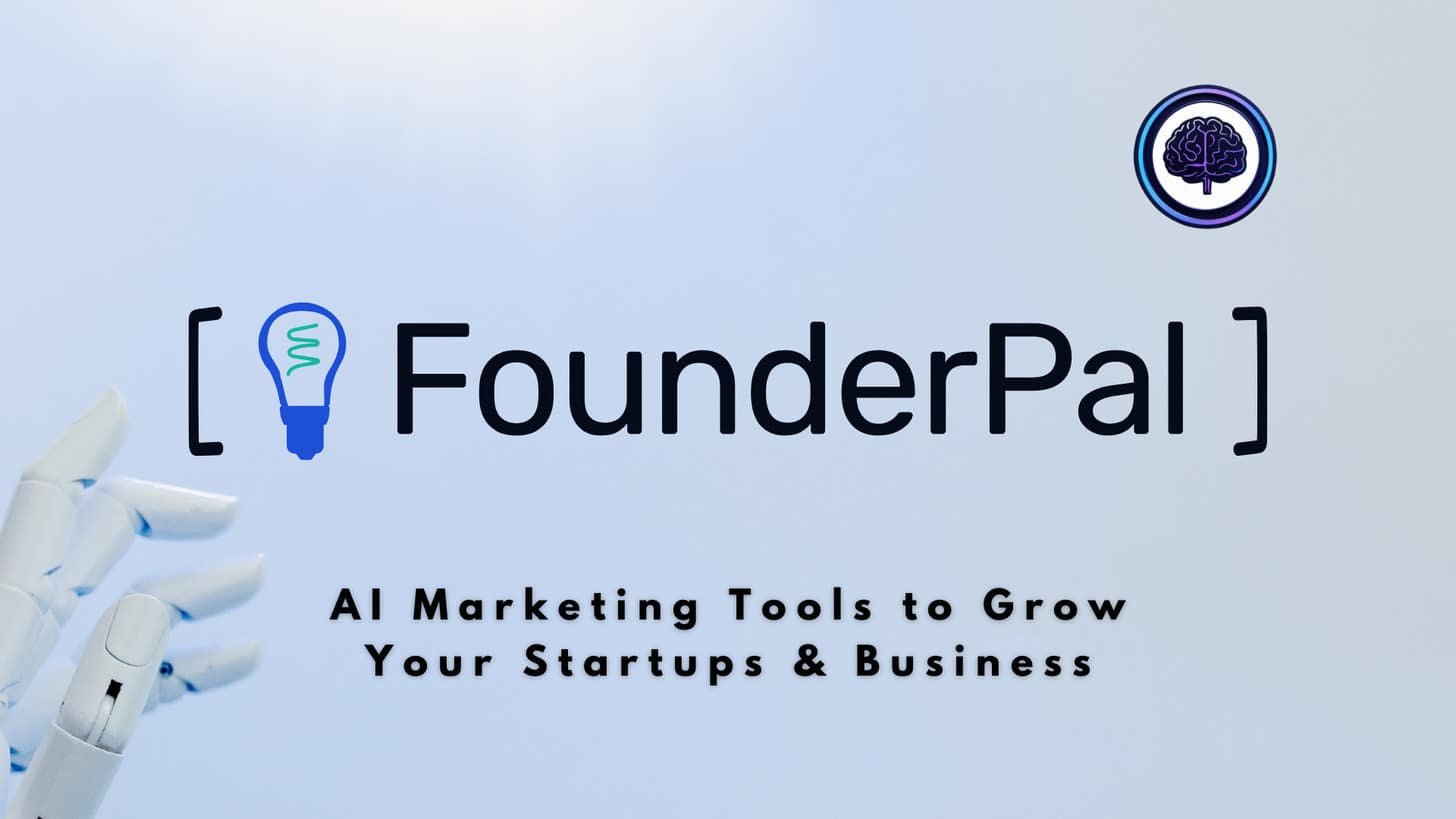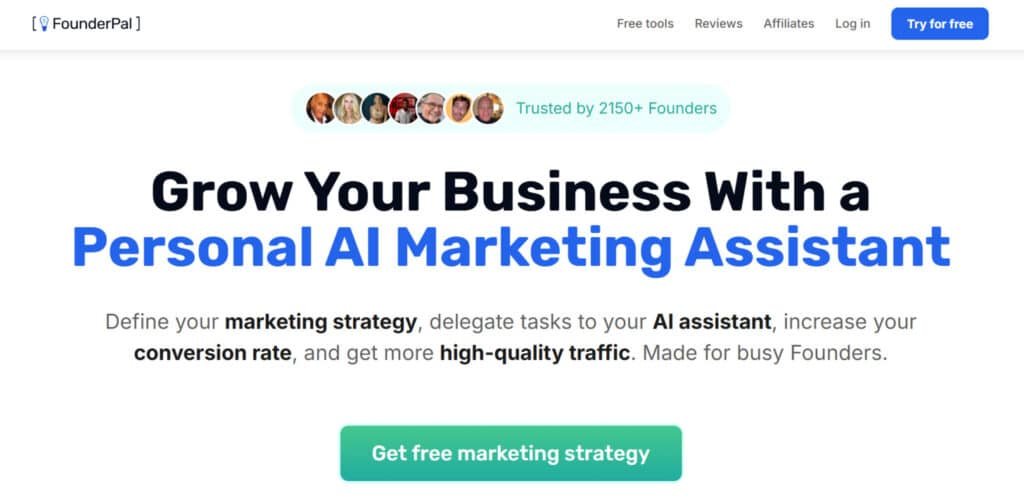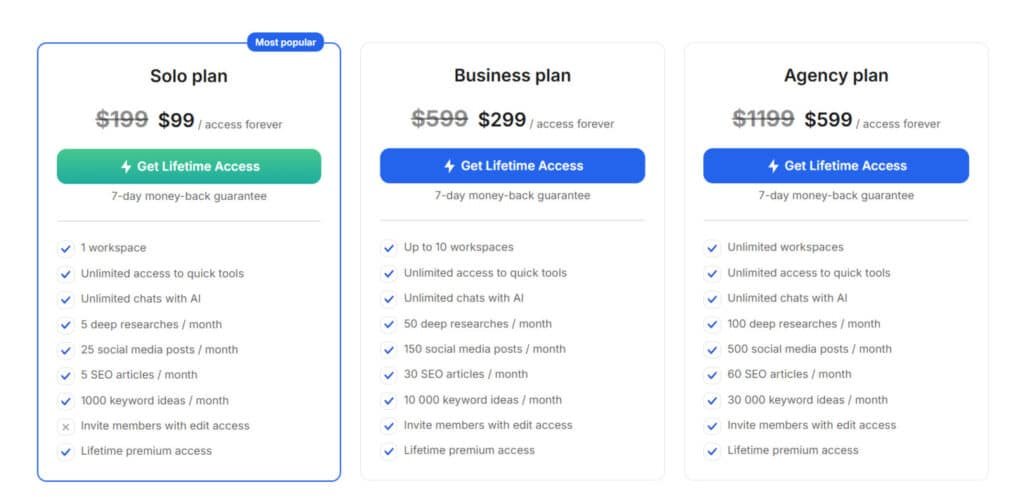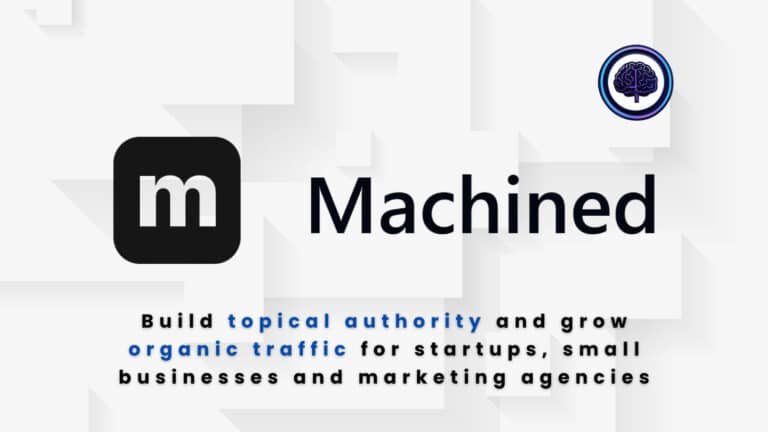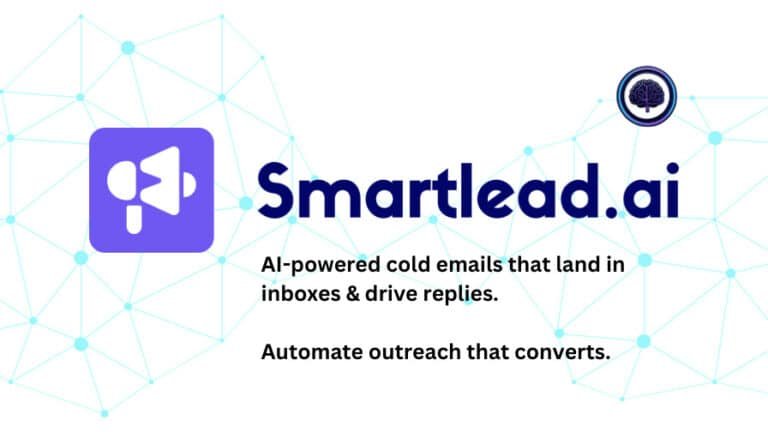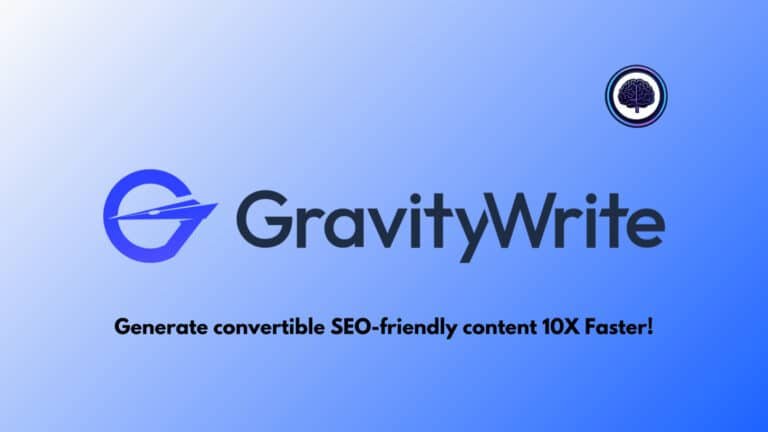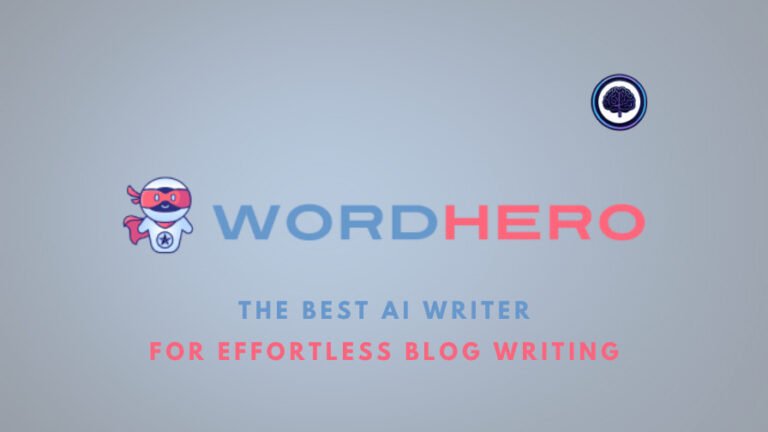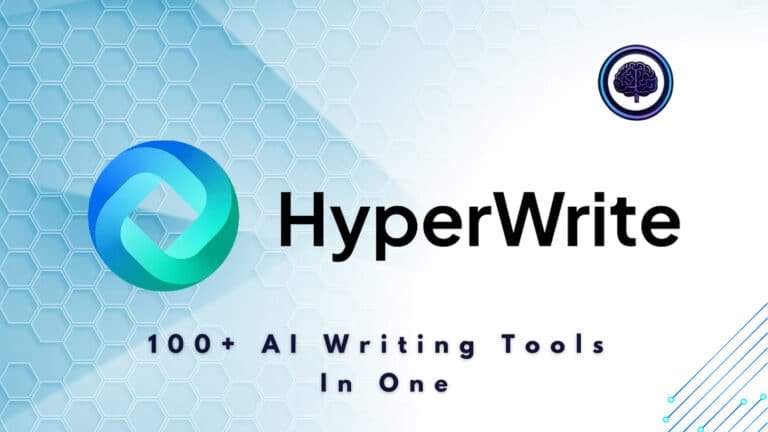You have ideas and a product, but marketing feels scattered, slow, or too generic to move the needle.
It’s frustrating to chase tactics that don’t fit your audience—wasted time, unclear plans, and stalled growth.
Many founders hit the same wall: tools that promise insights but return bland, one-size-fits-all content.
FounderPal, built by indie maker Dan Kulkov, positions itself as a marketing co‑pilot that asks for strategy first—personas and positioning—then generates tailored ideas, action plans, pricing tests, and funnel fixes.
I’ve used the platform enough to see how it turns context into practical strategies and keeps users managing idea status, goals, complexity, and cost estimates.
This article will show where the platform sits in the AI market, what features matter, pricing, pros and cons, and a mini case study so you can decide if this tool belongs on your website growth stack.
Let’s dive in.
Key Takeaways: FounderPal Review
- FounderPal mixes strategic inputs with AI to produce actionable marketing ideas.
- The platform favors founders who do the upfront work (personas, positioning).
- Users praise fast, personal support and idea quality versus generic AI chats.
- Expect tools for ideas, action plans, pricing, market research, and funnel fixes.
- We’ll cover pricing, pros/cons, alternatives, and a real case study to guide your plan.
FounderPal Review: An Overview
Raamish’s Take
FounderPal acts as a personal AI marketing assistant for busy founders, streamlining growth with a 24/7 co-pilot. I’m impressed by how it allows you to identify and research on your ideal audience , crafting up to 5 customer personas and journey maps to boost conversions without endless interviews.
It shines with unique positioning to refine value propositions, brand marketing for standout assets, and distribution strategies to zero in on top channels fast. Features like AI landing pages, SEO articles, and competitor analysis save months of guesswork, trusted by 2,150+ founders.
Compared to competitors like HubSpot, FounderPal has a lifetime access (starting at $99) offers more bang for less. Ever struggle with marketing plans? This delivers actionable insights and traffic boosts.
It’s a smart pick for scaling startups.
Introduction To FounderPal: Where It Fits in Today’s AI Marketing Landscape
Many founders juggle ideas and channels, but few have a repeatable way to turn product context into marketing that ships. Dan Kulkov built this platform to change that. He’s known for clear, tactical posts on X and fast, hands‑on support.
Who built it and why it matters in the AI Landscape
I find Dan’s approach useful because he focuses on product positioning before content. That matters in when the market is full of generalist AI tools. This platform aims to add structure so your outputs match your audience.
What it aims to do for founders, indie hackers, and small teams
The goal is simple: compress weeks of planning into hours. Enter personas, define positioning, and get targeted ideas, action plans, and research — grouped by goal, effort, and cost.
Social proof and traction
Numbers speak: 22,000+ strategies generated and 1,320 founders served. Public feedback often praises same‑day replies and regular updates, though a few users noted demo friction that was later addressed.
“Fast responses, iterative updates, and tools that push you to think about your market before generating outputs.”
- Who it fits: solopreneurs, indie hackers, and lean teams who want action, not just ideas.
- Why it matters: reduces tool‑hopping across your website and marketing stack.
| Metric | Value | Why it matters |
|---|---|---|
| Strategies generated | 22,000+ | Shows repeated use and practical outputs |
| Founders served | 1,320 | Adoption beyond early hype |
| Founder support | Same‑day replies | Faster fixes and iterative improvements |
| Core focus | Persona + positioning | Better alignment between product and marketing |
What Is FounderPal and How It Works for Your Marketing Strategy
When you feed a system real customer context, the output stops sounding like generic AI copy. This platform asks you to complete a simple Marketing Foundation — personas and positioning — before it generates any ideas. That upfront step is what makes the outputs actionable.
From personas to positioning: the Marketing Foundation that powers tailored outputs
You start a new strategy or try the demo, then fill persona and positioning fields. Those inputs become the persistent data the generator uses across runs. Save multiple personas if your product targets different customer segments.
How the AI generates ideas, plans, and funnel improvements based on your inputs
The generator turns your foundation into marketing ideas, prioritized plans, and funnel suggestions. Each idea includes a goal (distribution or conversion), complexity, and a cost range.
- Action plans per idea — step-by-step tasks you can execute.
- Pricing strategies and market research helpers appear in context.
- Status tracking and monthly updates keep strategies current.
Who gets the most value
This workflow fits solopreneurs, indie hackers, and lean startups who want a builder-friendly planning co‑pilot rather than enterprise overhead. In my use, it translated positioning into clear work — publish, test, measure.
| Feature | What it does | Why it helps |
|---|---|---|
| Marketing Foundation | Stores persona & positioning | Generates focused, repeatable marketing plans |
| Idea Generator | Produces prioritized ideas | Saves planning time and reduces guesswork |
| Action Plans & Funnels | Stepwise execution and funnel fixes | Improves conversion and ROI on experiments |
Best Features That Stand Out for Strategy, Research, and Execution
A tight set of connected features can turn fuzzy planning into fast, testable experiments. The platform groups eight core tools around your Marketing Foundation so each output ties back to positioning and persona data.
1. AI Content Generation
FounderPal’s AI Content Generation tools streamline the creation of marketing materials for business operations. These features enable users to produce high-quality content efficiently, supporting various formats tailored to promotional needs.
1.1 Blog Post Writer
The Blog Post Writer generates complete blog articles from user inputs like topics or keywords. It customizes tones, lengths, and structures while integrating SEO elements such as meta titles and internal links.
For business owners managing online presence, this tool saves time on content drafting, allowing focus on strategy.
Users report in reviews that it boosts business visibility through optimized posts, with one review noting a 30% increase in organic traffic after regular use. This helps readers seeking scalable content solutions by automating the writing process, ensuring consistent output without hiring writers.
In competitive markets, it aids business growth by delivering SEO-ready articles that rank higher, directly benefiting lead generation efforts.
1.2 Social Media Post Creator
This feature crafts platform-specific posts for LinkedIn, Twitter/X, Instagram, and Facebook, including hashtags, emojis, and A/B variations. Business teams use it to maintain active social profiles, enhancing engagement rates.
Customers appreciate the export and scheduling options, as highlighted in reviews praising its role in audience retention. For users exploring social strategies, it simplifies posting routines, helping readers with search intent to amplify brand reach.
By generating varied content, it supports business expansion through targeted interactions, reducing manual effort and improving post performance metrics over time.
1.3 Email Newsletter Builder
The Email Newsletter Builder designs personalized campaigns with subject lines, body copy, and CTAs, using AIDA frameworks and audience segmentation. It assists business communication by fostering subscriber loyalty.
Reviews from users emphasize its effectiveness in open rate improvements, with customers sharing success in conversion tracking.
This tool benefits readers aiming to nurture leads, providing structured emails that drive actions. For growing enterprises, it streamlines outreach, ensuring messages align with business goals and user preferences.
1.4 Ad Copy Generator
Generating copy for Google Ads, Facebook Ads, and LinkedIn, it offers headline variations and performance scoring. Business marketers leverage it for campaign optimization, as reviews indicate faster ROI.
Users find value in urgency-driven CTAs, helping readers optimize ad spends. It supports business scaling by refining persuasive text, leading to better click-through rates.
2. SEO and Keyword Optimization
These tools enhance search performance, crucial for business discoverability. They provide data-driven refinements to content and strategy.
2.1 Keyword Research Tool
It identifies high-volume, low-competition keywords with metrics like search volume and difficulty scores. Business analysts use it for content planning, with reviews commending its competitor gap analysis.
This aids users in targeting audiences effectively, helping readers build SEO foundations. By revealing opportunities, it accelerates business online growth, answering common questions on keyword selection.
2.2 SEO Content Optimizer
Analyzing drafts for keyword density, readability, and on-page elements, it includes plagiarism checks.
Customers in reviews value its improvement suggestions for business sites. For users refining pages, it ensures compliance with best practices, benefiting readers seeking higher rankings.
It transforms average content into authoritative pieces, supporting sustained business traffic.
2.3 Meta Tag and Schema Generator
Producing optimized titles, descriptions, Open Graph tags, and JSON-LD schema, it improves indexing. Business webmasters rely on it for rich snippets, as per reviews.
This helps users enhance visibility, guiding readers to better SERP appearances. It streamlines technical SEO, fostering business authority in search results.
3. Growth and Analytics Tools
Focused on insights, these features drive strategic decisions for business advancement.
3.1 Competitor Analysis Module
Scanning rivals’ sites and profiles, it extracts strategies and backlink opportunities. Reviews highlight its reports for business edge.
Users gain actionable information, assisting readers in market positioning. It identifies gaps, enabling competitive business maneuvers.
3.2 Trend Forecaster
Predicting trends from web data, it delivers industry-specific insights. Business leaders use it for proactive planning, with positive reviews on relevance.
For users tracking shifts, it informs content angles, helping readers stay ahead. Over years of refinement, it has proven vital for adaptive business strategies.
3.3 Performance Tracker
Monitoring content across platforms, it tracks traffic and engagement. Customers praise its visualizations in reviews. This equips users with metrics for optimization, benefiting readers measuring ROI. It supports data-informed business adjustments.
4. Design and Multimedia Features
These extend content to visuals, enhancing business multimedia efforts.
4.1 Image Prompt Generator for AI Art Tools
Creating prompts for tools like Midjourney, it specifies styles and ratios for marketing visuals. Business designers integrate it for quick assets, as reviews suggest.
Users streamline workflows, aiding readers in visual production. It elevates products and campaigns through professional imagery.
4.2 Video Script Writer
Developing scripts with hooks and captions, it supports promotional videos. Reviews note its narrative strength for business storytelling.
For users in video marketing, it structures content, helping readers engage audiences. It facilitates compelling business videos without extensive scripting.
5. Integrations and Compatibility
These ensure seamless workflows for business systems.
5.1 Third-Party Integrations
Connecting with WordPress, Google Analytics, and others, it supports custom workflows via API. Business owners streamline operations, as reviews confirm.
This aids users in system integration, helping readers unify tools, enhancing business efficiency.
5.2 Export Options
Content exports in Markdown, HTML, PDF, or CSV simplify CMS integration. Users benefit from flexibility, per reviews, assisting readers with content deployment. It supports business scalability across platforms.
5.3 Collaboration Features
Team accounts offer multi-user editing and permissions. Reviews praise its project management for business teams. Users coordinate efforts, helping readers manage workflows, ensuring smooth business collaboration.
6. User Interface and Accessibility
These enhance usability for business operations.
6.1 Dashboard Design
The modular interface with drag-and-drop workflows boosts productivity. Business teams customize it, as reviews note. Users optimize tasks, aiding readers in efficient tool use, supporting business productivity.
6.2 Mobile Responsiveness
Accessible via mobile browsers, it ensures flexibility. Reviews highlight its convenience for business mobility. Users manage tasks on-the-go, helping readers maintain business continuity.
6.3 Support and Resources
In-app tutorials, knowledge bases, and AI chat support assist users. Reviews commend accessibility for business needs. This helps readers resolve issues, ensuring smooth business tool adoption.
7. Additional Offerings
These provide foundational support for business ecosystems.
7.1 Templates Library
Offering 50+ customizable templates, it accelerates setups. Customers in reviews value variety for business applications. Users adapt them, benefiting readers starting projects, jumpstarting the business journey.
7.2 AI-Powered Personalization
Learning from history, it suggests tailored workflows. Business accounts benefit, per reviews. This enhances user efficiency, guiding readers to optimized tools, personalizing the account experience.
7.3 Compliance Tools
Checking GDPR, WCAG, and brand consistency, it ensures adherence. Users maintain standards, with reviews affirming reliability. For readers, it safeguards business operations, providing compliance confidence.
| Feature | Primary Benefit | Expected Outcome |
| Strategy generator | Rapid, actionable plans | Faster experiments and clearer priorities |
| Ideas & Action plans | Linked tasks with cost/complexity | Execution-ready projects |
| Research & Pricing | Market gaps and monetization | Better positioning and revenue tests |
Bottom line: As a builder, I like how ideas, pricing, and research connect. This set of features is less about churned content and more about turning strategy into repeatable execution.
Pricing Plans for FounderPal
Before you buy, know what each plan unlocks and where the free demo stops. The free demo gives a taste of the workflow so you can test the generator and see immediate outputs.
Solo Plan
The Solo Plan offers lifetime access for $99 (originally $199), with a 7-day money-back guarantee. Features: 1 workspace, unlimited quick tools and AI chats, 5 deep researches/month, 25 social media posts/month, 5 SEO articles/month, 1000 keyword ideas/month, member edit access, lifetime premium access.
Business Plan
The Business Plan provides lifetime access at $299 (down from $599), with a 7-day money-back guarantee. Features: 10 workspaces, unlimited quick tools and AI chats, 50 deep researches/month, 150 social media posts/month, 30 SEO articles/month, 10,000 keyword ideas/month, member edit access, lifetime premium access.
Agency Plan
The Agency Plan grants unlimited lifetime access for $599 (reduced from $1199), with a 7-day money-back guarantee. Features: unlimited workspaces, unlimited quick tools and AI chats, 100 deep researches/month, 500 social media posts/month, 60 SEO articles/month, 30,000 keyword ideas/month, member edit access, lifetime premium access.
| Feature | Solo ($99 Lifetime) | Business ($299 Lifetime) | Agency ($599 Lifetime) |
| Workspaces | 1 | Up to 10 | Unlimited |
| Deep Researches/Mo | 5 | 50 | 100 |
| Social Posts/Mo | 25 | 150 | 500 |
| SEO Articles/Mo | 5 | 30 | 60 |
| Keyword Ideas/Mo | 1,000 | 10,000 | 30,000 |
| Money-Back Guarantee | 7 days | 7 days | 7 days |
Value-for-money: solo founders vs. small teams
For solo founders, weigh monthly pricing against the time saved. One focused campaign or a pricing experiment often offsets the fee. If your business is early, use the demo to validate a path to market before upgrading.
Small teams and multiple users gain from shared plans: collaboration, ownership, and clearer planning capacity. Compare limits (strategies, personas, monthly generations) so the chosen plan matches your pipeline.
- Budgeting tip: compare the monthly cost to your current software and agency fees — an integrated tool can replace several niche services.
- Bottom line: pick the smallest plan that covers your quarter of campaigns, then reassess once you see traction.
Pros & Cons of FounderPal
Every tool has trade-offs — let’s list the clear wins and the realistic drawbacks. Below I summarize what users and founders report, then outline practical alternatives and when to pick them.
Pros
- Context‑aware ideas: outputs tie to your positioning, so strategies feel specific, not generic.
- Actionable plans: each idea expands into stepwise tasks with effort and cost estimates.
- Responsive support: founder replies are often same‑day and updates arrive frequently.
- Research helpers: competitive analysis and resource guidance reduce the need for separate market research tools.
- Team features: multi‑persona management and sharing keep small business teams aligned.
Cons
- Learning curve: some users find the interface dense at first—expect setup time for structured planning.
- AI reliance risk: outputs are best used as drafts; over‑dependence can weaken your brand voice.
- Edge case gaps: niche scenarios may return generic suggestions—tighten inputs or add manual research.
- Demo friction: a few reviews mention paywall surprises; public responses note refunds and clarified limits.
Alternatives to FounderPal
If you want total prompt control or already run a research stack, consider tools like a custom GPT trained on your docs, generalist AI chat tools for ad‑hoc prompts, or specialist market research platforms for deep data.
FounderPal generates quick marketing copy, personas, and strategies tailored for solopreneurs—solid for bootstrappers at $19/month (free tier for basics). These six tools expand on that with deeper templates, audience research, or all-in-one workflows.
Simplified AI
Simplified AI bundles writing, design, short videos, and social scheduling into one dashboard. Teams cut tools in half—free tier strong, $30/month Pro unlimited. I built a full Reel campaign in 20 minutes – Read Full Review
StoryLab.AI
StoryLab.AI sparks hooks, video scripts, and growth ideas with team brainstorming. Marketers love the creativity boost—$15/month Starter for unlimited generations – Read Full Review
CustomGPT
CustomGPT builds branded chatbots trained on your content for websites or support. No-code setup—free trial, $49/month Standard. I trained one on my blog; leads answered themselves – Read Full Review
CrawlQ
CrawlQ researches audience psychographics and crafts buyer personas with data-driven copy. Agencies dig the depth—$79/month Professional. I mapped a niche; messaging felt spot-on – Read Full Review
GetMerlin
GetMerlin works as a browser extension for on-page copy, tweets, and summaries. Switch models mid-task—free 102 queries/month, $19/month Pro unlimited – Read Full Review
Content Harmony
Content Harmony delivers topic briefs, keyword clustering, and outline grading for SEO teams. Content scales predictably—$99/month Starter. I briefed a pillar post; ranked top 5 in weeks – Read Full Review
These tools move beyond FounderPal’s solo focus into design, research, or team collaboration. Pick based on your biggest gap—copy speed or audience insight.
| Tool | Key Strengths | Starting Price | Best For |
|---|---|---|---|
| FounderPal | Solopreneur personas, quick strategies | Free / $19/month | Bootstrappers & fast ideas |
| Simplified AI | Write + design + video + scheduling | Free / $30/month | Small teams & full stacks |
| StoryLab.AI | Hooks, scripts, team brainstorming | $15/month | Creative blocks & growth ideas |
| CustomGPT | Branded chatbots, no-code training | $49/month | Websites & support automation |
| CrawlQ | Psychographics, data-driven personas | $79/month | Agencies & deep audience work |
| GetMerlin | Browser copy, tweets, multi-model | Free / $19/month | On-page productivity |
| Content Harmony | Topic briefs, clustering, SEO grading | $99/month | Teams & predictable ranking |
Summary: The pros outweigh the cons for founders who value focused strategies and fast iteration. Choose alternatives if you need granular control, heavier research, or a lightweight set of stitched‑together tools.
Case Study and Personal Experience: Real Results Using FounderPal
I ran a week‑long test to see if a structured marketing co‑pilot actually turns plans into shipped work. I started with a fresh product brief, completed the Marketing Foundation, and let the platform generate initial marketing plans tied to my positioning.
Real-world outcomes
The Marketing Ideas tool produced 10 ideas; I kept 8. Each idea came with a goal, complexity, and cost—so prioritization was fast and objective.
Clicking one idea revealed a full action plan. I moved tasks into my tracker and shipped a campaign within days. The Pricing Strategies module suggested two monetization angles I hadn’t considered.
One pricing test became a quick A/B on my website and improved sign-ups. I used the research helper to sanity‑check competitor messaging and tightened my headline based on the insights.
My experience
Compared to generic prompts, the outputs felt anchored to my market and product—less drift, more execution. For a week I followed one plan end‑to‑end and tracked solid results versus spinning in planning.
“With better inputs, the tool turns strategy into daily to‑dos; sloppy inputs give average ideas—so invest in clear ICP notes.”
- Takeaway: as a builder, I found it speeds marketing strategies into shipped work.
- Tip: use the free demo to validate a project early—then commit to clean persona and positioning data.
Conclusion
Raamish’s Take
FounderPal acts as a personal AI marketing assistant for busy founders, streamlining growth with a 24/7 co-pilot. I’m impressed by how it allows you to identify and research on your ideal audience , crafting up to 5 customer personas and journey maps to boost conversions without endless interviews.
It shines with unique positioning to refine value propositions, brand marketing for standout assets, and distribution strategies to zero in on top channels fast. Features like AI landing pages, SEO articles, and competitor analysis save months of guesswork, trusted by 2,150+ founders.
Compared to competitors like HubSpot, FounderPal has a lifetime access (starting at $99) offers more bang for less. Ever struggle with marketing plans? This delivers actionable insights and traffic boosts.
It’s a smart pick for scaling startups.
When you anchor ideas to real customer profiles, marketing work becomes measurable and repeatable.
I recommend this tool if you’re a founder or builder who wants focused marketing strategies that turn into shipped work. The platform pairs a simple Marketing Foundation (personas + positioning) with eight integrated features — ideas, action plans, pricing, research, and funnel fixes — so you get context‑aware strategies, not generic content.
Quick start: try the demo, add one persona, generate a plan, and run a two‑week test on your website. With 22,000+ strategies generated and 1,320 founders served, users praise the fast support and steady updates.
Watch for the learning curve and treat outputs as drafts. If you value structured planning over prompt tinkering, this is a pragmatic upgrade—ship one idea, measure lift, then scale.
Frequently Asked Questions
Who built FounderPal and why does it matter in today’s AI marketing landscape?
FounderPal was created by a small team focused on helping founders and indie hackers translate early product ideas into marketing-ready strategies. Nowadays the significance is practical — it combines prompt-driven AI with structured marketing frameworks so you get usable plans fast, not just brainstorming. That matters if you want repeatable outputs that map to channels, budget, and customer personas.
What does FounderPal aim to do for founders, indie hackers, and small teams?
The platform aims to shorten the gap between idea and go-to-market. It generates tailored marketing strategies, customer personas, pricing ideas, funnel optimizations, and step-by-step action plans — all based on inputs about your product, audience, and constraints. You get a blueprint you can act on without hiring an agency.
How many users and strategies has the platform produced?
FounderPal has reported generating over 22,000 strategies and serving roughly 1,320 founders and creators. Those numbers reflect traction among solopreneurs and early-stage teams seeking a practical, repeatable way to plan marketing.
How does FounderPal turn personas into positioning and concrete outputs?
You supply core details — ideal customer, pain points, price sensitivity, and distribution channels. The AI uses that marketing foundation to craft positioning statements, messaging pillars, and channel-specific tactics. The result is persona-driven outputs instead of one-size-fits-all suggestions.
How does the AI generate ideas, plans, and funnel improvements from my inputs?
It combines rule-based marketing frameworks with language models to translate your inputs into idea lists, prioritized campaigns, and funnel experiments. Each idea includes suggested steps, estimated cost and complexity, and measurable KPIs so you can test quickly and iterate.
Who gets the most value from this tool?
Solopreneurs, indie hackers, and lean startups get the most immediate value — especially teams that need focused, executable plans without large marketing budgets. It’s also useful for product-led founders who want data-backed experiments rather than vague advice.
What are the standout features for strategy, research, and execution?
Key features include a Marketing Strategy Generator for end-to-end plans, detailed customer insights and persona building, a multi-idea brainstorming engine with status tracking, actionable step-by-step plans per idea, pricing strategy suggestions, competitive analysis and market research, and funnel improvement recommendations. There’s also multi-persona management and sharing for team collaboration.
How detailed are the action plans per idea?
Action plans are practical and checklist-style — they include prioritized tasks, estimated timelines, rough cost ranges, and complexity ratings. They’re designed to help you move from concept to testable execution with clear next steps.
What pricing strategies does the tool suggest?
It suggests a mix of monetization approaches tailored to your product type — freemium, subscription tiers, one-time purchases, discounting schemes, and value-based pricing. Recommendations consider customer willingness-to-pay and competitive positioning to surface ideas you might not have tried.
How good is the market research and competitive analysis output?
The platform provides focused gap analysis and competitor comparisons that highlight opportunity areas and mispositioning risks. It’s not a full custom agency report but gives enough insight to prioritize experiments and position your product strategically.
What about funnel improvement suggestions — are they actionable?
Yes. Funnel suggestions zero in on conversion bottlenecks and offer concrete tests — e.g., copy tweaks, CTA changes, landing page experiments, and email sequences — with suggested metrics to measure impact. They’re meant for rapid A/B testing and iteration.
How do multi-persona management and monthly updates work?
You can create and manage multiple customer personas, assign separate strategies to each, and share those plans with teammates. Monthly updates refresh ideas and tactics based on new inputs or performance, keeping strategies adaptive as your market evolves.
What are the pricing tiers and what do they include?
Plans typically range from a free demo with limited outputs to paid tiers that unlock full strategy generation, multi-persona support, and ongoing updates. Higher tiers add collaboration features and larger plan volumes — choose based on team size and frequency of strategy needs.
Is FounderPal good value for solo founders versus small teams?
For solo founders it’s high value if you need quick, actionable plans without agency fees. Small teams benefit most from collaboration features and multi-persona workflows. Evaluate how often you’ll generate strategies — heavy users justify higher tiers faster.
What are the main pros of using this marketing strategy generator?
Pros include fast, high-quality marketing ideas, actionable plans, helpful customer insight tools, responsive founder support, and rapid iteration — all tailored to founders who need pragmatic guidance rather than theory.
What are the main cons and limitations?
Cons include a learning curve to get optimal inputs, a risk of over-relying on AI without human validation, occasional generic outputs for very niche markets, and some friction in the demo experience. Expect to refine suggestions with real-world tests.
What alternatives should I consider?
Alternatives include building custom GPTs (for bespoke prompts), general AI chat tools like ChatGPT or Bard for ad-hoc ideation, and niche research platforms (e.g., Rankability, SnowSEO) for deeper competitive data. Each has different trade-offs in cost, customization, and execution support.
Are there real-world case studies or user experiences?
Yes — users report moving from vague ideas to validated experiments, refined pricing, and clearer go-to-market steps. In my experience, the tool outperforms generic prompts by delivering more structured plans and executable to-dos you can test within weeks.
How should I use the tool to get the best results?
Be specific with inputs — clear customer descriptions, pain points, pricing constraints, and channel preferences. Use the generated ideas as hypotheses, run short tests, and feed results back into the tool for better monthly updates. Treat it as a strategy partner, not a replacement for customer feedback.
Does the platform integrate with other marketing tools?
Integrations vary by plan but commonly include CSV exports, sharing links, and basic workflow hooks to paste recommendations into tools like Notion, Trello, or your CRM. Check the plan details for deeper native integrations if you need automation.
How does FounderPal protect my business and idea data?
The platform follows standard SaaS security practices — data encryption in transit and at rest, user access controls, and privacy policies that state how input data may be used to improve models. If you handle sensitive IP, review the specific terms before uploading proprietary documents.
Can the tool help improve conversion rates without a developer?
Yes — many funnel suggestions are low-code or no-code (copy changes, button placement, email flows). For technical experiments you’ll still need developer support, but the tool prioritizes tests you can implement quickly with limited resources.
How often should I refresh my strategy using the platform?
Monthly updates are a good cadence for early-stage founders — enough time to run tests and gather data. For fast-moving markets you may refresh more often; for stable niches quarterly updates can suffice. The built-in monthly review feature helps maintain momentum.

